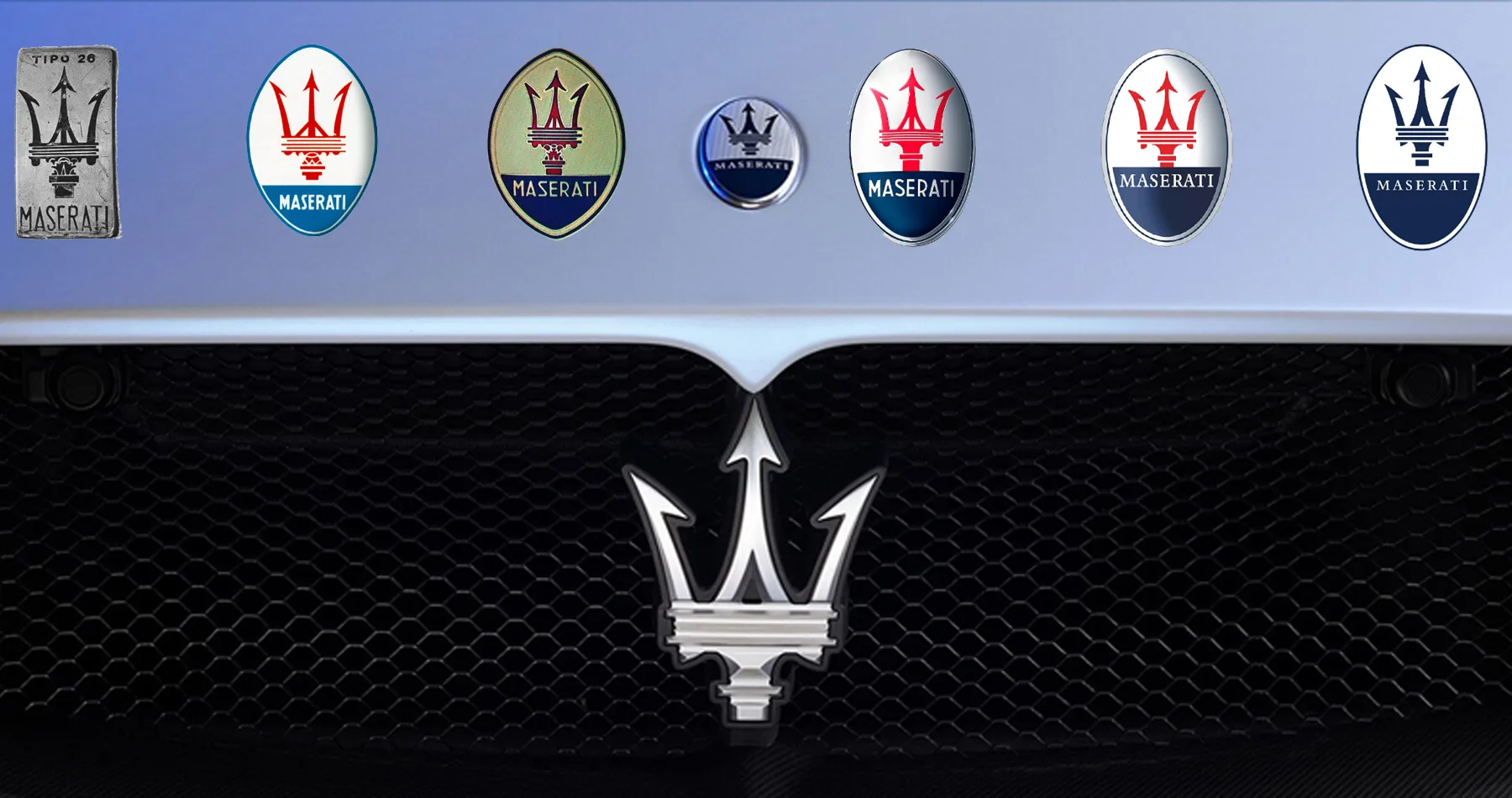Maserati, the renowned Italian luxury car manufacturer, has carved a niche in the automotive world for its high-performance vehicles and distinctive emblem — the Trident. The Trident logo, a symbol of power and prestige, holds a rich history and embodies the essence of Maserati’s identity. In this exploration, we delve into the origins, evolution, and symbolism of the Maserati Trident, unraveling the story behind one of the most iconic automotive logos in the world.
Why is the Maserati logo a Trident?
I. Historical Roots:
The Trident emblem traces its roots back to the city of Bologna, Italy, where Maserati was founded in 1914 by Alfieri Maserati and his brothers. The Maserati brothers, involved in producing the spark plugs, ventured into the era of automobile manufacturing with a passion for racing and engineering.
II. Inspiration and Creation:
The inspiration for the Trident emblem can attributed to Neptune, the Roman god of the sea. The Maserati brothers, deeply influenced by their hometown’s maritime heritage, chose the Trident as a symbol of strength, vigor, and a nod to their commitment to dominating the automotive industry. Mario Maserati, the only brother not involved in the company, is credited with the style of the Trident emblem. 1926 saw its official adoption.
III. Symbolism of the Trident:
A. Power and Authority:
The Trident, characterized by its three-pronged design, exudes a sense of power and authority. Reflecting the prowess of the Roman god Neptune, the emblem signifies Maserati’s dominance on both the road and the race track. This symbolism aligns with Maserati’s racing heritage, where the brand has achieved notable success in various motorsports competitions.
B. Elegance and Style:
The Trident is a powerful symbol, yet it’s also elegantly and stylishly made. The sleek and refined design of the emblem mirrors the sophistication embedded in Maserati’s luxury vehicles. The fusion of power and elegance encapsulates the brand’s commitment to delivering high-performance cars with a touch of Italian luxury.
IV. Evolution of the Trident:
Over the years, the Trident emblem has undergone subtle changes, reflecting the evolution of Maserati as a brand. From its first appearance in 1926, the Trident has seen refinements In detailing and proportions. The modifications, however, have been minimal, emphasizing Maserati’s commitment to preserving the essentials of its identity while adapting to contemporary design trends.
V. The Trident in Maserati’s Branding:
A. Recognition and Prestige:
The Trident has become synonymous with Maserati, serving as a visual identifier that resonates with automotive enthusiasts worldwide. The logo’s distinctive and timeless design contributes to Maserati’s brand recognition and enhances the perceived prestige associated with its vehicles.
B. Brand Cohesion:
Beyond its visual appeal, the Trident plays a role in maintaining brand cohesion across Maserati’s diverse product lineup. Whether adorning a sleek sports car or a luxurious SUV, the Trident serves as a unifying element that ties together the brand’s heritage, performance, and design philosophy.
Conclusion:
In conclusion, the Trident emblem of Maserati is a testament to the brand’s storied history, racing legacy, and commitment to excellence. From its inception in the 1920s to its enduring presence on modern Maserati vehicles, the Trident continues to symbolize power, elegance, and the pursuit of automotive perfection. As Maserati evolves in the ever-changing automotive landscape, the Trident remains an iconic emblem that transcends time, solidifying Maserati’s position as a symbol of Italian luxury and performance.

READ MORE :
- All About Aston Martin Cars
- Audi e tron Review
- Bently Continental GT price in India
- BMW X1 Price in India
- Brezza 2022 Launch date in India
- Why Bugatti Is So Expensive?
- Best car dealers in Dubai
- Concorde Motors Kochi
- Honda Showroom Kochi
- Indus Motors Thevara
- KIA DEALERS IN PUNE
- Lamborgini Showroom in India
- Nippon Toyota Kalamassery
- Rolls Royce Showroom in India
- Sai Service Pathadipalam
- Top 10 Car Showrooms Kottayam,
- Top 5 Car Showrooms Trivandrum
- BREZZA 2022 vs TATA NEXON
- Citroen C3 price in India
- 2021 Chevrolet corvette vs Mustang Shelby GT50
- Is Mercedes-Benz better than BMW?
- EcoSport Price in Kerala
- Upcoming Ford cars in India –
- Alcazar
- Cars price in India
- Hyundai Creta
- i20 Price in Kerala on-road
- venue price in India
- KIA Carens price in India on road
- Carnival 2021 India
- KIA Cars on road price in India
- seltos price in Kerala
- Kia sonet price in Kerala
- Landrover Range rover Evoque review
- Mahindra Bolero Neo
